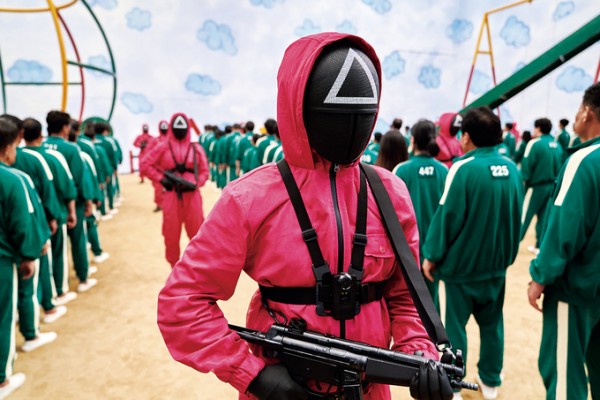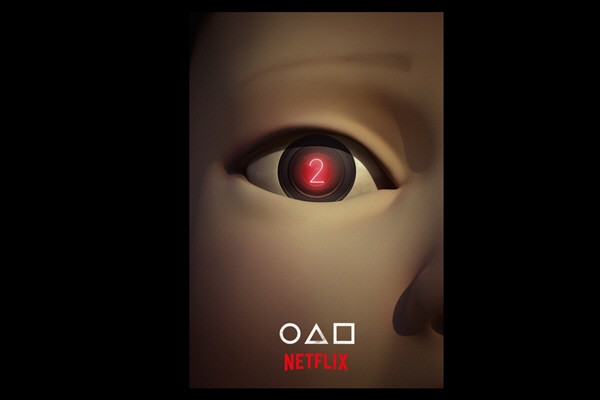130, Suyeonggangbyeon-daero,
Haeundae-gu, Busan, Republic of Korea,
48058
NEWS & REPORTS
Korean Streaming Market Heats Up
Feb 09, 2021
- Writerby Pierce Conran
- View1988
Global Audience Tastes Changing the Flavor of Korean Entertainment

The millions of Netflix subscribers around the world who logged into their accounts over the past few days were likely tempted by scintillating images of an imagined future and dazzling displays of intergalactic travel. However, they didn’t belong to the latest Hollywood sci-fi tentpole. Netflix’s most widely viewed offering around the world, since its launch last Friday, was the highly anticipated SPACE SWEEPERS, the first-ever space drama from South Korea.
Granted, SPACE SWEEPERS was never meant to debut online. Originally scheduled for release in summer, and then once again during the Chuseok Holiday in September, the film eventually pivoted to a global launch on Netflix as COVID-19 put a damper on theatrical releases. Yet this was far from the first time that a Korean film or drama series became a global hit on Netflix, and it’s been a similar case with other global streaming services, particularly those active in Asia, such as Viu and iQIYI.
Korean content is more valuable than it’s ever been before and this reality is bringing about a massive change in the local industry, particularly with regards to streaming content, with the growing online market making sweeping advances amid the ongoing COVID-19 pandemic. As the market for Korean content has globalized, a large number of new players have entered the content creation field, some from overseas, but many from within Korea.
Netflix has been active in Korea since 2016, and while the steamer welcomed BONG Joon-ho to make his international production Okja, which debuted in 2017, Netflix Korea took its time, building partnerships with local providers to populate its streaming offerings, and eventually delved into Korean originals with the series Kingdom, which debuted in 2019.

Kingdom changed the template for what a Korean drama series could be. It featured a hit K-drama writer in KIM Eun-hee (Signal), but was helmed by a film director (KIM Seong-hun, Tunnel, 2016) and featured several movie stars, some, like RYU Seung-ryong, were not known for appearing on TV. It was also a period horror series that was more violent than what could normally air on TV and it was more concentrated than terrestrial offerings, with six episodes averaging 50 minutes, rather than the 16 installments of 70 minutes format that is most common in the K-drama world.
The show was a hit both at home and abroad and proved to be a catalyst for Korea’s fledgling online market. Netflix, which already had several shows in development and production, doubled down on its originals, ordering increasingly ambitious fare that combined film and TV talent and explored high-concept genres that they felt would prove popular for international audiences.
Beyond Netflix, many local streamers have also seen their fortunes rise in the online marketplace. Among them are Watcha, which features a large film catalog, with a mix of big blockbusters, classic films, and arthouse titles, and Wavve, a joint venture between KBS, SBS, and MBC which carries the big series of the top broadcasters. There’s also TVING, a service from CJ E&M that hosts many of the top shows from the cable channels, such as OCN, JTBC, and tvN.
Much like Netflix did for its first few years in the market, these services have largely been focused on building their subscriber bases and securing content, before eventually setting their sights higher. Wavve has now launched several original series, including the anthology show SF8, which was helmed by a collection of renowned filmmakers led by MIN Kyu-dong, and TVING is planning to invest more than 400 billion won (US$362.5 million) in original content, which it hopes to share with 5 million subscribers by 2023.

In the latest rankings of the domestic streaming market, Netlfix remained in first, with Wavve clinching second, while TVING rose two spots to third. Closing out the top five were services from major Korean telecommunications firms - KT’s Seezn and LG Uplus’ U+ Mobile TV - with Watcha narrowly behind in sixth.
Joining the fray late last year was Coupang Play, which has been busy expanding its film library, which included acquiring dozens of high profile local titles from Showbox and Next Entertainment World. The service is hoping to attract many of the eCommerce giant’s 5 million WOW subscribers.
Despite all these different major players already active in the field, the consensus is that Korea remains a growing market, both as local users turn to streaming in droves, but also since the demand for Korean content from global viewers is on the rise.
All eyes this year will be on Disney+, which is expected to launch in Korea at some point in 2020. For those who had wondered if and when the mouse house streaming giant would wade into original Korean programming, the answer seems to be immediate as reports surfaced this month that casting is underway for the Disney+ series Our Police Class.

Apple TV+ is another global giant that many except to migrate to Korea soon. Though the company has not revealed anything officially, it is already busy at work on two Korean projects. Entering production a few months ago was Pachinko, a multi-lingual drama based on the best-selling novel of the same name about Korean immigrants. This month, cameras rolled on Mr. Robin, Director KIM Jee-woon’s six-part adaptation of the webtoon ‘Doctor Brain’.
If all of that wasn’t enough, many also expect HBO Max to make its way to Korea before long, while others wonder if Amazon Prime Video (which is nominally available as a service but without a ground operation) will also follow suit.
With all these players in the field and the expectation that they will be servicing a global market rather than just a Korean one, the content itself is also beginning to change, as content creators hope to appeal to broad audiences with tastes that may differ from the traditional Korean viewing palette.
A case in point is the recent hit Netflix original Sweet Home, a VFX-heavy monster series with plenty of bloodletting. Though it follows in the footsteps of the success of Korean films like TRAIN TO BUSAN (2016) it would have been hard to imagine a Korean series attempting something similar even a few years ago. However, the series was received with a tepid response in Korea, but after global viewers had warmed to it, the show quickly received a second wind in Korea.

SPACE SWEEPERS, though it will likely dominate the Netflix charts in Korea all the way through the Lunar New Year holidays, has also received some lukewarm responses from local viewers while the reaction from international audiences has been somewhat warmer.
Perhaps the greatest example of the occasional shortfall between Korean and global tastes has been the zombie film #ALIVE, which, owing to strong marketing, had a solid debut before quickly sliding down the charts. When the film was picked up for global distribution on Netflix a few months later, international audiences loved it and pushed it to number one around the world.
While creators must now navigate these tricky new waters in an attempt to find the sweet spot between Korean and global viewers, the thing’s for sure -the world can’t get enough of Korean content.







































